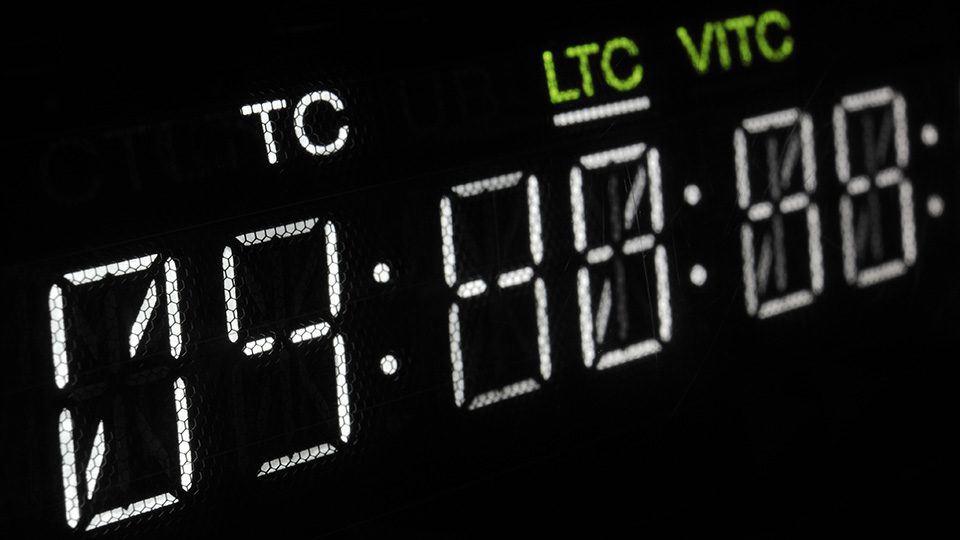
I wake up at 6:00 a.m. and do my usual routine: ice water, 1-hour run, skin care regimen, then I check my gear. F8n Pro. Tentacle Sync. Lockit Box. Pristine, efficient, beautiful. Everything labeled, color-coded, prepped. Why? Because I’m not a f*cking animal.
But when I arrive on set, I’m greeted by someone pointing a camera at a subject while recording sound “double system” without—get this—timecode. I ask if they’re syncing with timecode and they say, “Nah, we’ll just clap.”
Clap? Like cavemen?
Let’s get one thing straight: Timecode isn’t a luxury. It’s the backbone of a professional workflow. It’s the difference between the videographer and the filmmaker. Between chaos and control.
There’s a trend—especially on smaller productions—where people cut corners. Modern tech is too good, so we’ve gotten lazy. Editors rely on waveform syncing, videographers don’t know the word “lockit,” and suddenly your post team is in hell, digging through takes like they’re looking for Jimmy Hoffa.
You know what eliminates that? Timecode.
Timecode isn’t just for syncing sound to picture. It’s a language—a common reference point that spans departments. It aligns the soundie, the editor, the producer, and the post team on one linear map of time.
Let’s say your AAF doesn’t match your timeline. Happens all the time. With timecode, you can reference exactly where a take landed. When someone says “Go to 01:03:47:13,” I go there. Instantly. Not hunting. Not guessing. That’s power.
When your editor says, “What happened to the dialogue in scene 4?” and you check your notes—timecode matches, track metadata says it was MOS—you can confidently respond: “That’s not missing audio. It was never meant to exist.”
Timecode makes that clarity possible. It separates mistakes from intentions.
A true professional doesn’t just send timecode. They embed context:
It’s a habit. It’s a standard. It’s what prevents 2 a.m. calls from post asking, “Which mic was on the groom again?”
If you think you’re saving time by skipping these steps on set, you’re only pushing the pain downstream. And it will come back. Always.
Here’s where timecode stops being “helpful” and becomes critical—multi-cam setups.
Shooting a wedding? An interview? A branded spot with two or three angles running? You want to sync that by waveform? Good luck.
With timecode, you jam each camera and recorder before the shoot (or sync them wirelessly), and suddenly everything falls into perfect alignment. Doesn’t matter if the angles are different lengths, or if you have to stop and roll again—sync is effortless.
Your editor pulls the files into the NLE, selects “sync by timecode,” and walks away with a clean, aligned multi-cam sequence.
It doesn’t just save time.
It makes you look good.
And Yes, It’s Easy
This part always blows people’s minds:
Timecode is not hard to set up.
A Tentacle Sync E or Deity TC-1 costs less than a pair of sneakers and takes 10 seconds to jam sync.
One box on the camera. One box on your recorder. That’s it.
No cables. No claps. No waveform prayer circles.
You check the signal once. Maybe rejam at lunch. The rest of the day? Locked.
Smooth. Professional. Exactly how it should be.
Let me be crystal clear:
Optimizing your setup doesn’t have to be complicated. It just has to be disciplined.
If you fancy yourself a filmmaker, act like it. It’s not just about having the best LUT or the widest lens. It’s about understanding the machine you’re building. Timecode is the wiring of that machine. Invisible—but essential.
And when the producer wants pickups from day 2, and your editor can instantly pull the clean boom take from 17:19:12:05 on card 3B, you look like a genius.
Because you are.
Because you used timecode.
Because you gave a damn.
There is no prestige in cutting corners. There is no nobility in laziness. There is only time lost—or saved—by how well you prepare.
Timecode is not just a tool.
It’s the mark of someone who understands the whole system.
So next time someone says “We’ll figure it out in post,” smile politely. Then reach for your Tentacle Sync, and do it right anyway.